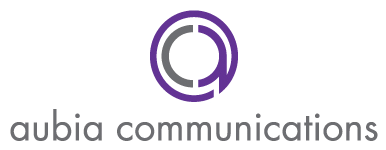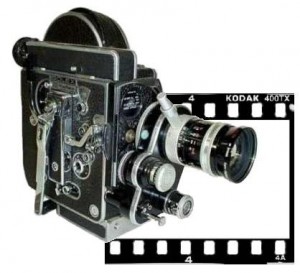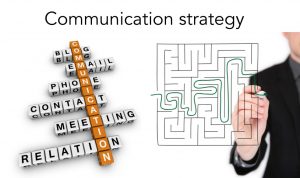Last week, I wrote about the steps of crisis communications planning, using the Auburn shooting incident as the example. During that event, which came to an end with the shooter turning himself in, Auburn Police Department Chief Tommy Dawson conducted a few press conferences. This tactic is a great tool for disseminating information quickly to a large portion of your audience. A media event can go awry if you haven’t prepared, so here are my steps for a successful press conference.
1. Determine if you need a press conference
Nothing is more irksome than holding a press conference without newsworthy information. Make sure your information is worth the time of media members. In a crisis situation, you will most likely need to hold a press conference. This can be determined by how much media interest you’re receiving within the first hour of the crisis. Minor crises may only warrant a Response to Query posture, but you should always be prepared to host a press conference within a two-hour time frame during an emergency event.
2. Prepare your media kit
You want media members to be able to walk away with information that will assist them when writing about your organization. Media kits that include company and product fact sheets, bios of spokespersons, contact information for follow-up questions, and other pertinent information should be distributed to reporters at the press conference.
I like to have media members sign in before the press conference and hand them a media kit at that time. You can keep the list of reporters that attended and have their contact information available for any follow-up comments.
Your media kit should be on hand at all times. You won’t have time to develop static pieces, like fact sheets and bios, during a crisis. Also, be sure your spokesperson is aware of the information contained in your media kit. If a reporter asks something about a statement on your fact sheet, your spokesperson should be able to respond.
3. Choose your location
The logistics of your press conference needs to be taken into account so that you maximize participation. Have the press conference somewhere that comfortably accommodates the amount of media members you would expect for the most attended events and ensure any audio/visual needs are met. Consider your backdrop, too. If the press conference is about opening a new store, the shop front would be ideal.
In an emergency situation, a press conference may need to be held near the site of the crisis event. Your crisis plan should include locations that you have pre-established agreements with to host press conferences and media centers, and also how you will provide access to the site for media coverage.
4. Select and train your spokesperson
Your spokesperson should be the person in your organization who is most familiar with the information you’ll be sharing. If you’re releasing a new product to the market, then the project manager that led the development team would be best qualified. Remember, as I discussed in the crisis communications post, the CEO isn’t always the best selection. You want the boss present at the press conference to show support, but spokespersons should be carefully selected for their knowledge of the situation.
Rehearse the press conference with the spokesperson, asking possible questions the media will want to know and responding with the best crafted answers. You should also have spokespersons already identified for particular crisis events. Be sure you are periodically media training these employees so they’ll be prepared when the time comes.
5. Set the agenda
An employee from your communications department should be the emcee for the press conference. If your organization doesn’t have a communications department, select an employee who is comfortable hosting and can handle such a media event. Your emcee will be the first to address media members, welcoming them to the press conference, introducing the spokesperson, and defining the agenda for the event. The agenda should cover an opening statement will be given, how long the question-and-answer session will be (stick to your time limit and announce when there is only time left for a final question), how reporters should identify themselves and who they represent, discuss what can be found in the media kit, and who can answer follow-up questions later.
6. Prepare your opening statement
After the introduction, your spokesperson should approach the platform with a prepared statement that covers the gest of what is happening. Provide as much information, covering the five Ws (who, what, where, when and why), as possible in the opening statement. Included in your opening statement should be your key messages that you want the press to take away and any call of action that is appropriate.
7. Allow for questions and answers
The purpose of a press conference is to disseminate the information you have and answer questions members of the media may have. I have personally never seen the benefit of hosting a press conference where the spokesperson only makes a statement without taking questions. This creates hostility toward your organization as it can be seen as a faux media event, wasting the time of the press.
Questions should be answered honestly and to the best ability of the spokesperson. If a question can’t be answered, the spokesperson should explain why it can’t be answered. If it’s due to the fact the spokesperson doesn’t know the answer, then let the reporter know someone from the organization will get back with them after the conference to follow up. No matter what, don’t say “no comment.” This phrase only conveys two possibilities: 1) Guilty. You have the information, but you’re hiding it. 2) You’ve relinquished any commentary control and will allow the story to be written without any input by your organization. At that point, you have no say in how the story will appear.
Have someone from your organization record questions and who is asking them. This will make it easier to follow-up with reporters who need more information.
8. Conclude the press conference and walk away
This is where I see some of the worst mistakes made in a press conference: the emcee allowed for 10 minutes for questions and answers and has announced there is only time left for one more question; the final question is asked and answered; the spokesperson thanks the media members and begins to walk away; a reporter shouts another question and the spokesperson turns to answer it. No! When spokespersons have walked away and turned back to answer questions, there is a loss of control and a tendency to answer questions somewhat sloppier than the spokesperson would during the original question-and-answer period. The media will keep asking question. Your spokesperson needs to keep walking. This is where the emcee needs to re-approach the platform, thank the media for coming, explain any final directions, and conclude. In your media kit, media members should find information on how to address follow-up questions.
Press conferences are valuable tactics in a Public Relations took kit. Be prepared for them, conduct them with the above steps, and you can walk away strengthening your organization’s reputation.
Have you ever participated in a press conference and have personal experience tips? Share them in the comments.



